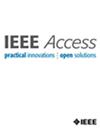用于遥测、跟踪和指挥的撒丁岛深空天线光学设计
IF 3.4
3区 计算机科学
Q2 COMPUTER SCIENCE, INFORMATION SYSTEMS
引用次数: 0
摘要
撒丁岛深空天线(SDSA)于 2017 年由意大利航天局(ASI)委托建造,目前能够在 X 波段运行,为深空和近地遥测任务及科学实验提供支持。在与撒丁岛射电望远镜(SRT)共享基础设施的同时,SDSA 还拥有自己的专用控制中心和特定设备。本文概述了一种新的光学设计和无线电频率升级,以增强 SDSA 当前和未来跟踪深空和近地任务的能力。拟议的设计旨在利用 SDSA 的卓越多功能性,将其打造成空间活动领域最先进的天线。这包括其适应新设备的能力和利用 SRT 天线固有特性的能力,如其有源表面和频率灵活性。通过与欧空局的合作,新设计的光学配置实现了 X、K 和 Ka 频段的接收和传输。具体来说,X 和 K 频段被分配用于近地无线电通信(200 万公里范围内)。此外,X 和 Ka 波段配置是为深空业务设计的,包括著名的三链路技术,用于 200 万公里以外的无线电科学任务。为了描述升级版天线的性能,我们介绍了新光学设计的电磁模拟。我们分析了天线在不同下行和上行频段的辐射模式,并评估了增益-噪声系统温度($G/T_{sys}$)和有效各向同性辐射功率(EIRP)等关键参数。模拟使用 TICRA 的专用商业软件 GRASP 和 CHAMP 3D 进行。这项研究的结果提供了有价值的信息,说明升级后的 SDSA 能够实现广泛的空间通信和空间科学应用,使 SRT 的 SDSA 配置成为设备最先进、技术最先进的地面段设施之一。本文章由计算机程序翻译,如有差异,请以英文原文为准。
The Optical Design of the Sardinia Deep Space Antenna for Telemetry, Tracking, and Command
Commissioned in 2017 by the Italian Space Agency (ASI), the Sardinia Deep Space Antenna (SDSA) is currently able to operate in the X-band, supporting deep space and near Earth telemetry missions and scientific experiments. While sharing its infrastructure with the Sardinia Radio Telescope (SRT), the SDSA boasts its own dedicated control center and specific equipment. This paper outlines a new optical design and the radio frequency upgrades to enhance the SDSA’s capabilities for current and future tracking of deep space and near Earth missions. The proposed design aims to establish the SDSA as a state-of-the-art antenna in the field of space activities by capitalizing on its exceptional versatility. This includes its ability to accommodate new equipment and leverage the inherent characteristics of the SRT antenna, such as its active surface and frequency agility. A collaborative effort with ESA has resulted in a newly designed optical configuration enabling reception and transmission in the X, K, and Ka frequency bands. Specifically, the X and K frequency bands are allocated to near Earth radio communication (within a 2 million kilometer range). Additionally, the X- and Ka- bands configurations are designed for deep space operations, including the well-known triple-link technique for radio science missions beyond 2 million kilometers. To characterize the performance of the upgraded antenna, we present the electromagnetic simulations of the new optical design. We analyze the antenna radiation pattern across various downlink and uplink frequency bands and evaluate key parameters like gain-to-noise system temperature (
$G/T_{sys}$
) and effective isotropic radiated power (EIRP). The simulations were conducted using the dedicated commercial software GRASP and CHAMP 3D by TICRA. The results of this study provide valuable information on the capability of the upgraded SDSA to enable a wide range of space communication and space science applications, making the SRT in its SDSA configuration one of the most equipped and technologically advanced ground segment facility.
求助全文
通过发布文献求助,成功后即可免费获取论文全文。
去求助
来源期刊

IEEE Access
COMPUTER SCIENCE, INFORMATION SYSTEMSENGIN-ENGINEERING, ELECTRICAL & ELECTRONIC
CiteScore
9.80
自引率
7.70%
发文量
6673
审稿时长
6 weeks
期刊介绍:
IEEE Access® is a multidisciplinary, open access (OA), applications-oriented, all-electronic archival journal that continuously presents the results of original research or development across all of IEEE''s fields of interest.
IEEE Access will publish articles that are of high interest to readers, original, technically correct, and clearly presented. Supported by author publication charges (APC), its hallmarks are a rapid peer review and publication process with open access to all readers. Unlike IEEE''s traditional Transactions or Journals, reviews are "binary", in that reviewers will either Accept or Reject an article in the form it is submitted in order to achieve rapid turnaround. Especially encouraged are submissions on:
Multidisciplinary topics, or applications-oriented articles and negative results that do not fit within the scope of IEEE''s traditional journals.
Practical articles discussing new experiments or measurement techniques, interesting solutions to engineering.
Development of new or improved fabrication or manufacturing techniques.
Reviews or survey articles of new or evolving fields oriented to assist others in understanding the new area.
 求助内容:
求助内容: 应助结果提醒方式:
应助结果提醒方式:


